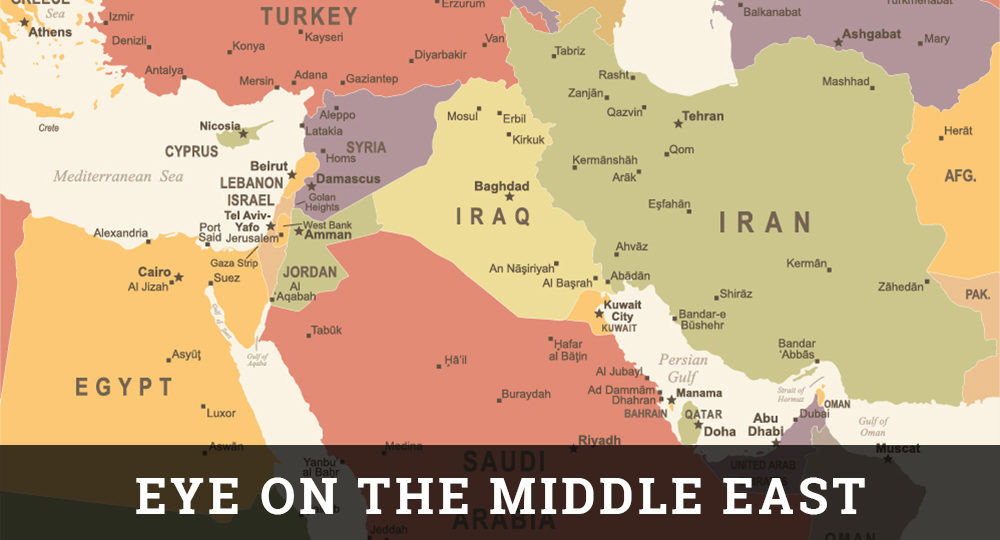UN Rewrites Temple-Mount History
The UN General Assembly recently passed a resolution that calls Jerusalem’s Temple Mount by its Muslim name only. The so-called Jerusalem Resolution is part of Islam’s effort to erase Jewish history and rebrand the site as exclusively Islamic.
Adopted by a vote of 129 to 11, with 31 abstentions, the resolution refers to the Temple Mount, the holiest site in Judaism, solely as Haram al-Sharif (the Noble Sanctuary). The compound, which includes the Dome of the Rock (AD 691) and the al-Aqsa mosque (AD 705), occupies the site of the ancient Jewish Temple King Solomon completed in 957 BC. The Jewish presence there dates back some 3,000 years, predating the Islamic presence by 1,700 years.
An Islamic guidebook to the Temple Mount, published in 1924 by the Supreme Muslim Council, recognized the site’s Jewish nature: “Its identity with the site of Solomon’s Temple is beyond dispute. This, too, is the spot, according to the universal belief, on which ‘David built there an altar unto the Lord, and offered burnt offerings and peace offerings [2 Samuel 24:25].’”
The Palestinian position is part of a larger struggle for control over Jerusalem. “In Jerusalem, theological and historical claims matter; they are the functional equivalent to the deed to the city and have direct operational consequences,” said Middle East scholar Daniel Pipes. “Jewish and Muslim connections to the city therefore require evaluation.”
Scripture would be a good place to begin. Jerusalem appears 806 times in the Bible: 660 times in the Old Testament and 146 times in the New Testament, according to Baker’s Bible Dictionary. By contrast, Islam’s Qur’an never mentions Jerusalem.
Jerusalem was founded in 3000 BC, predating Islam by 3,600 years; and Muslim interest in the city has waxed and waned. Early on, Jerusalem was “an outlying city of diminished importance.” By the 10th century, renowned scholar F. E. Peters described Muslim rule over it as having “no particular political significance.”
During Ottoman rule (1516–1917), Süleyman the Magnificent rebuilt the city’s walls, but then the city suffered centuries of neglect. As the Turkish Empire was collapsing near the end of World War I, Jamal Pasha, the Ottoman commander-in-chief, instructed his Austrian allies to “blow Jerusalem to hell” should British forces enter the city.
Muslim passion for Jerusalem increased during British rule (1917–1948). Israeli scholar Hava Lazarus-Yafeh noted Jerusalem “became the focus of religious and political Arab activity only at the beginning of the twentieth century,” ascribing the change mainly to “the renewed Jewish activity in the city and Judaism’s claims on the Western Wailing Wall.”
During Jordanian rule (1948–67), Muslims again lost interest. Not until 1967, when the Old City came under Israeli control after the Six-Day War, did the Arabs turn Jerusalem into the centerpiece of their political program to establish an independent Palestinian state.
Since then, Palestinian officials have been rewriting history. In 1997, Ikrima Sabri, the Grand Mufti of Jerusalem, declared, “Jerusalem is a symbol for every Muslim in the world.” He added, “The claim of the Jews to the right over it is false, and we recognized nothing but an entirely Islamic Jerusalem under Islamic supervision.” In 2009, Islamic judge Sheikh Tayseer Rajab Tamimi said there was no evidence Jews had ever lived in Jerusalem or that the Temple ever existed: “Jerusalem is an Arab and Islamic city, and it always has been so.”
The UN resolution “calls for respect for the historic status quo at the holy places of Jerusalem, in word and in practice.” Yet it is doing the very thing it claims it wants to prevent. “The hypocrisy of these resolutions is truly outrageous,” said Israel’s permanent representative to the UN Gilad Erdan. “A resolution about Jerusalem that does not refer to its ancient Jewish roots is not an ignorant mistake, but an attempt to distort and rewrite history!”








